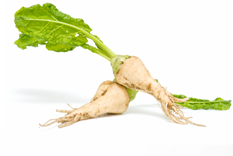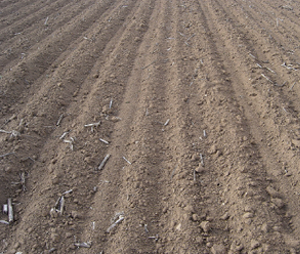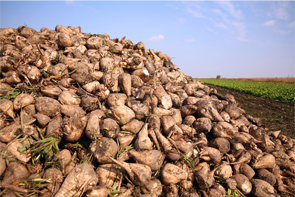Sugar Beet Farming
Sugar beet contributes to country's economy, employment and environment.

Techniques to grow sugar beet

Sugar beet farming in our country affects the lives of approximately 500 thousand farmers, in other words 3 million people. Also, agriculture engages with animal husbandry, i.e. feed, medicine, meat, milk, transportation and service sectors. The subject is an integral part of different branches and issues such as agriculture, agricultural industry, processed basic food products and employment. In terms of sugar beet, quality is as much important as yield. Because price of the product is determined according to sugar ratio of beet. High yield and quality are possible if producer knows how and when all operations in sugar beet growing such as soil preparation, fertilization, planting, maintenance, fighting, irrigation, harvesting and silage should be done very well.
Soil Preparation

Fall tillage must be performed during soil preparation in sugar beet growing. In fields where fall tillage is performed; it is benefited from fall and winter precipitations more, easier field and seed bed preparations are made for spring. In case of not to perform fall tillage, it is dealt with the field very much because field will be tilled during spring. Since this will take a long time, mellowness of the field is lost and seed planting delays. Soil preparation in spring is the most sensitive work of sugar beet farming. Time of preparation before planting, way of using equipment used in this work affect yield and quality of the sugar beet and therefore, the production significantly. Depending on tilling the field in the same depth for a long time, plow pan is formed. This prevents beet from going deep and bifurcation occurs. For this reason, it should be remembered that it is necessary to break plow pan by applying subsoiler in 50-60 cm deep once in 4-5 years.
Variety Selection
One of the most important factors affecting yield and quality in sugar beet production is variety selection. In recent years, flexibility has been provided to farmers for seed selection in sugar beet farming, farmers have started to use different sugar beet seeds supplied from the market in addition to seeds given by beet cooperative. Since sugar companies now perform a quality based procurement policy, it is beneficial for the farmers to tend towards varieties whose quality and yield are at the highest level. Following characteristics should be taken into consideration while selecting variety.
- In should be suitable for climate and soil structure of the region where it is planted,
- It should be resistant to diseases and running to seed,
- Root and sugar yield should be high,
- Germination strength and field exit should be well,
- It should be healthy, reliable and cheap.
In recent years, farmers may buy seeds at very high prices unconsciously because of the reason that there are many varieties on the market and these seeds may be planted much more frequently than the normal planting norm, so this situation increases costs. Today, germination strength of all varieties sold is high. Because of this reason, when farmers combine any variety meeting criteria above with proper growing technique, there is no reason not to make high yield and high quality production.
Planting
In sugar beet farming, sowing time affects presence of purified sugar and root yield. If planting time is delayed, growing time of the beet becomes short, the ripening delays and the expected efficiency of fertilizers can't be obtained. Resistance of plants against diseases and pests decreases. Because of these reasons, it is very important to plant sugar beet in time.
In the spring, right after soil tillage and the seed bed preparation are over, planting process should be started without losing moisture and mellowness of the soil.
According to the average of long years in Konya region, spring frosts can be seen until the middle of April.
With the fear of repetitive plantings caused by late frosts during spring, delaying planting time too much may usually causes loss rather than profit. So planting when the soil temperature and climate are in ideal conditions is the most correct action. Sugar beet seeds can reach soil surface at 4-5 degrees.
Time for starting to plant is the time when the soil temperature is 5-7 degrees in 0-5 cm deep regularly and surface of the soil can be raked according to rainfall, i.e. when ideal mellowness of the soil is obtained. Period between end of the March and middle of the April is the most convenient planting time in Central Anatolia and transition regions. Sugar beet planting for Konya region should be done as of 15th of March when the soil is mellow. In order to reduce seed waste and thinning works, intrarow planting spacing should be adjusted according to soil fertility and mellowness. For this, planting when soil is mellow will give the best result in reaching ideal plant density.

Sugar beet is planted in the same field every four years due to for year rotational cycle system. However, there has been significant increase in especially soil borne diseases in Konya region in recent years due to the fact that correct plant species to be grown in periods when sugar beet wouldn't be planted, couldn't be determined, same plant species were grown successively. If necessary sensitivity is not shown in the following years, it may be necessary to begin five year or six year rotational cycle systems instead of four year rotational cycle. One year forage plants rotations, bean-sugar beet-wheat-corn-or sunflower, can be recommended for sugar beet planting areas. If weed grows in the field, it is absolutely necessary to use herbicides before or after planting.
If weed isn't fought against, development of young beet seedling is prevented and yield decreases. Sugar beet is planted in 45cm interrow spacing in our country and is generally thinned in 20-25 cm distance. It gives the best result in 9.000-10.000 pieces of plant trials in a decare. However, our farmers plant with very close intrarow spacing in order to guarantee output, this cause increase in especially expenses made by farmers for seeds.
Planting speed is one of the important factors affecting planting quality. In planting performed by using precision sowing machine, tractor’s speed shouldn’t exceed 4km/hour. Over speed causes seeds to be spread irregularly, to stay on the surface of the soil and it causes failure to adjust deepness.
Click to download relevant section of the book titled “Farmer’s Guide to Plant Production”.
Click to download the book titled “Farmer’s Guide to Plant Production”.
